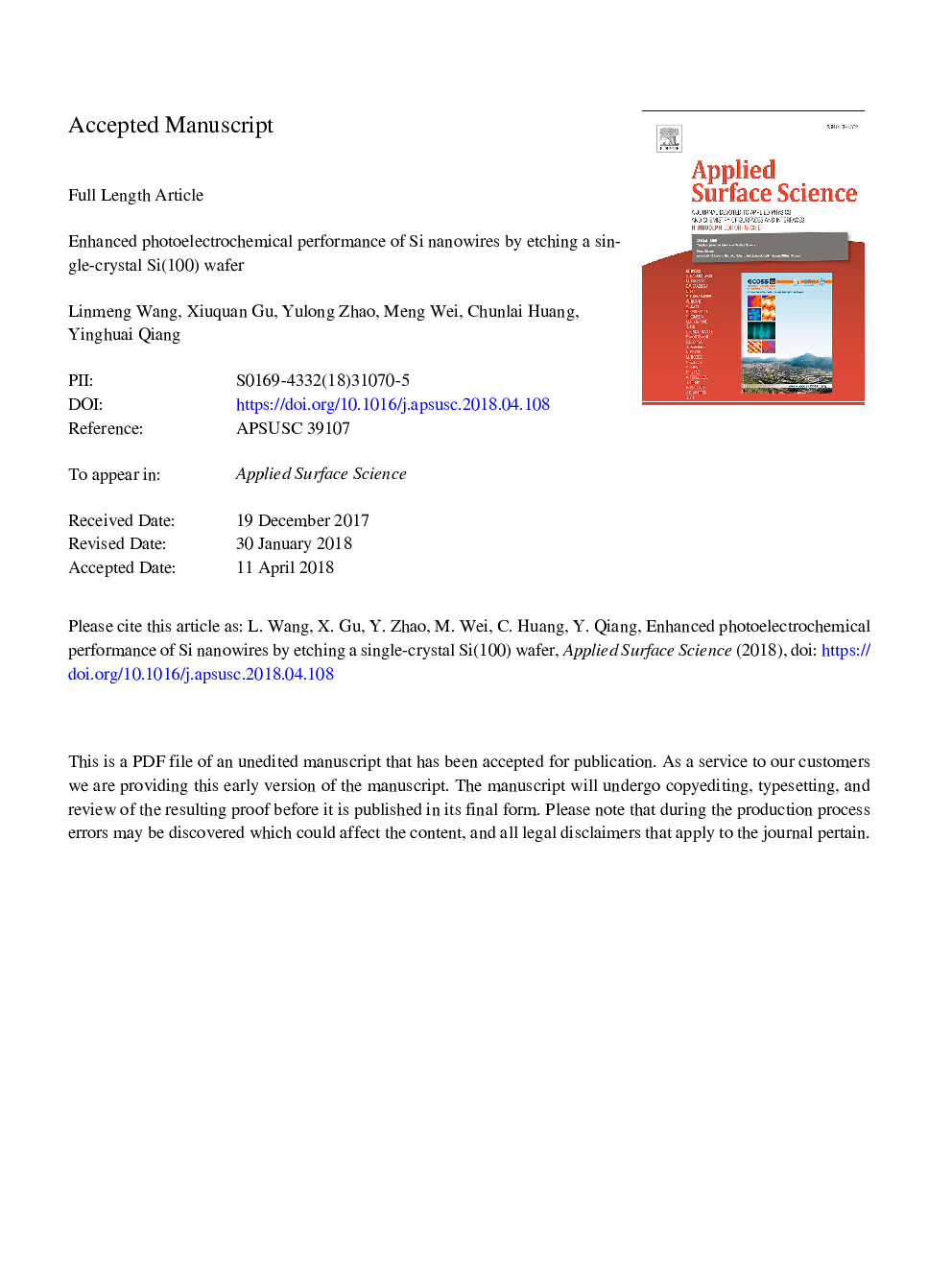| Article ID | Journal | Published Year | Pages | File Type |
|---|---|---|---|---|
| 7833729 | Applied Surface Science | 2018 | 34 Pages |
Abstract
Si photoelectrodes with two different morphology, including the porous Si (PSi) and Si nanowires (SiNWs), have been prepared via a facile wet-chemical etching method. The SiNW displays acceptable stability and photocurrent density (J) of 1.1â¯mAâcmâ2 at 1.23â¯V versus (vs.) reversible hydrogen electrode (RHE) under solar irradiation, which are superior to the PSi and attributed to the improved surface area and light harvesting capability. Electrochemical impedance technique is employed to analyze the mechanism underlying the differences in PEC performance. A prototype PEC bio-sensor is fabricated using a SiNW electrode for detection of glutathione (GSH), leading to acceptable detect limit of 0.81â¯Î¼molâ¯Lâ1 (μM) and sensitivity of 61.32â¯mAâ¯cmâ2â¯Mâ1. Further, it is found that both the PEC stability and photoresponse of SiNW electrodes could be enhanced efficiently by depositing thin Mo layers. Our studies demonstrated the prospect of Si as an electrode material for applying in the PEC or bio-sensing fields.
Related Topics
Physical Sciences and Engineering
Chemistry
Physical and Theoretical Chemistry
Authors
Linmeng Wang, Xiuquan Gu, Yulong Zhao, Meng Wei, Chunlai Huang, Yinghuai Qiang,
